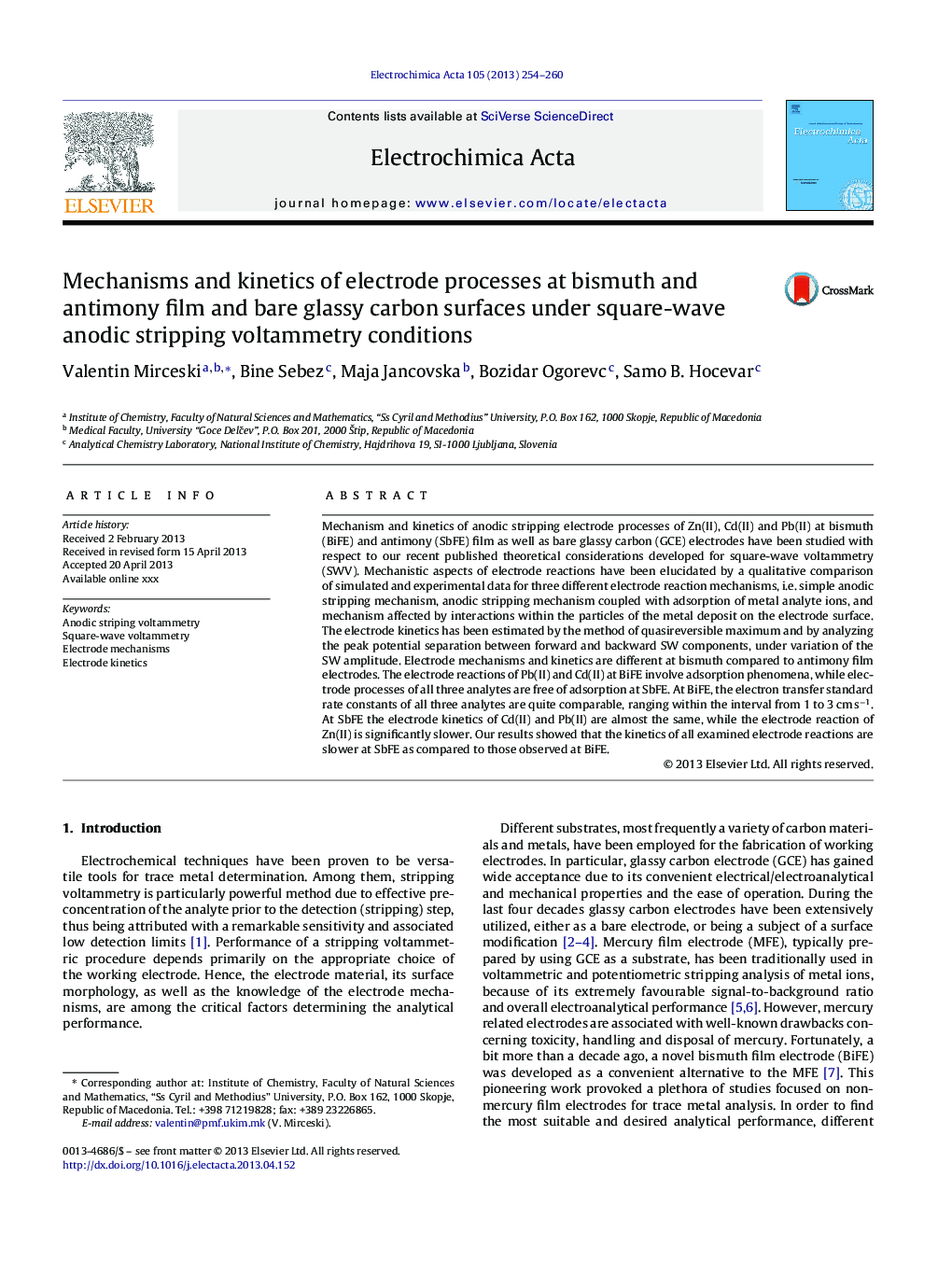| Article ID | Journal | Published Year | Pages | File Type |
|---|---|---|---|---|
| 6617461 | Electrochimica Acta | 2013 | 7 Pages |
Abstract
Mechanism and kinetics of anodic stripping electrode processes of Zn(II), Cd(II) and Pb(II) at bismuth (BiFE) and antimony (SbFE) film as well as bare glassy carbon (GCE) electrodes have been studied with respect to our recent published theoretical considerations developed for square-wave voltammetry (SWV). Mechanistic aspects of electrode reactions have been elucidated by a qualitative comparison of simulated and experimental data for three different electrode reaction mechanisms, i.e. simple anodic stripping mechanism, anodic stripping mechanism coupled with adsorption of metal analyte ions, and mechanism affected by interactions within the particles of the metal deposit on the electrode surface. The electrode kinetics has been estimated by the method of quasireversible maximum and by analyzing the peak potential separation between forward and backward SW components, under variation of the SW amplitude. Electrode mechanisms and kinetics are different at bismuth compared to antimony film electrodes. The electrode reactions of Pb(II) and Cd(II) at BiFE involve adsorption phenomena, while electrode processes of all three analytes are free of adsorption at SbFE. At BiFE, the electron transfer standard rate constants of all three analytes are quite comparable, ranging within the interval from 1 to 3 cm sâ1. At SbFE the electrode kinetics of Cd(II) and Pb(II) are almost the same, while the electrode reaction of Zn(II) is significantly slower. Our results showed that the kinetics of all examined electrode reactions are slower at SbFE as compared to those observed at BiFE.
Related Topics
Physical Sciences and Engineering
Chemical Engineering
Chemical Engineering (General)
Authors
Valentin Mirceski, Bine Sebez, Maja Jancovska, Bozidar Ogorevc, Samo B. Hocevar,
